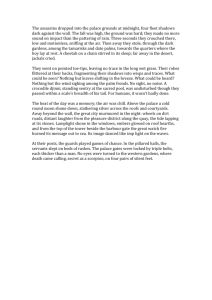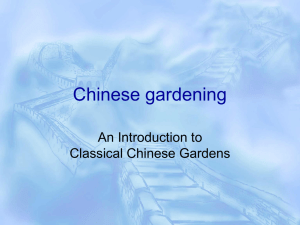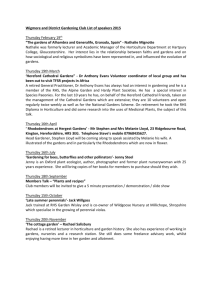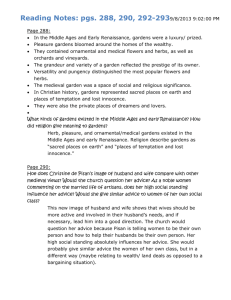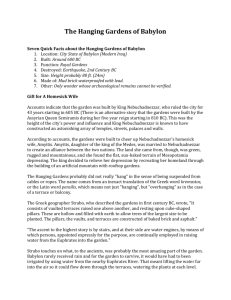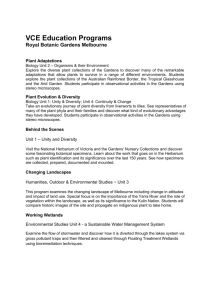classical Chinese garden
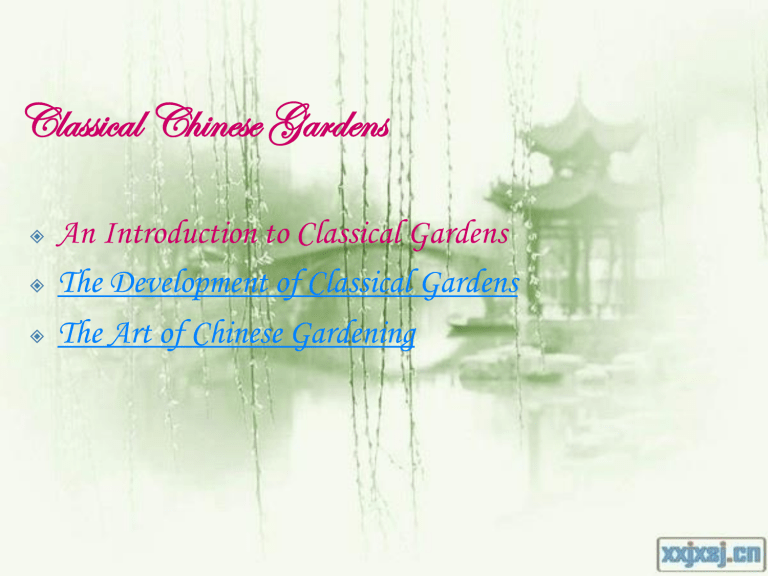
Classical Chinese Gardens
An Introduction to Classical Gardens
The Development of Classical Gardens
Introduction
“The Mother of World Gardens”
“A Wonder of World Art”
A fantastic integration of exquisite building crafts and natural scenery
The pursuit of natural beauty is the ultimate goal
Features
An essential part of traditional Chinese culture
A symbol of one’s status (royal families/the wealthy/the literati)
Artistic design (landscape painting/poetry)
A reflection of people’ outlook towards life
Influenced by Chinese philosophical/religious thoughts
The gardens are man-made, but they look like a divine creation
Summer Palace
Imperial
Summer
Resort
The Humble Administrator’s Garden 拙政园
王献臣
文徵明
The Lion Grove Garden (Buddhist)
天如 倪云林
The Art of Chinese Gardening
The Essential Elements of the Garden
Rockeries
Water
Plants
Architecture
Cloud-capped Peak 冠云峰
( 6.5 meters King of Taihu rock)
The Nine Lions Peak 九狮峰
Taihu rocks are slender and elegant in shape, marked with clear veins, rich in curves and lines on the surface, riddled with holes, and porous in substance so that water may be passed up and down foran even distribution of moisture.
Water plays an essential role
It gives pulsating life to the garden
In spring, peach trees blossom;
In summer, lotuses blossom & willows;
In autumn, maple leaves change color;
In winter, the evergreen provide greenery (plum blossom)
The Zigzag Corridor
The Corridor on Water
The Long corridor in Summer Palace
Patterned Footpaths
The footpathsof colored pebbles arranged in patterns
It is the feature of Chinese landscape gardening
The Marble Boat
The largest marble boat in Summer Palace
The Scenic Opening
The fancy gates and windows, the artistic feature of Chinese architecture
Any form
(round, square, oval, leaf-shaped)
Plants or rockeries
Scenic windows
Latticed windows ( 漏窗 )
The Development of Classical Gardens
The Shang and Zhou dynasties (3000 years)
Imperial parks: the earliest form of Chinese gardens (Yuan or You)
The hunting parks: high terraces were built; birds and beasts were raised for emperors tohunt for pleasure.
The Qin & Han dynasties
Hunting parks were further developed into palatial gardens royal palaces for recreation and banquet
(the architecture were the major form)
Shanglin Park: the first royal garden
Celestial Lake (where stand three mounts of immortals)
Penglai, Yingzhou and Fangzhang
“One lake with three mounts”
Hua Qing Palace
A model of imperial gardens
苏舜钦
Northern Song Dynasty
The Literati Gardens
Canglang Pavilion
Southern Song
Notion: gardens should imitate nature and go beyond the beauty of nature.
Natural landscape gardens
The Yuan Dynasty
The Lion Grove Garden
A pearl of private gardens in Suzhou
The Ming Dynasty
The largest private garden
The Qing Dynasty
The Lingering Garden
留园


